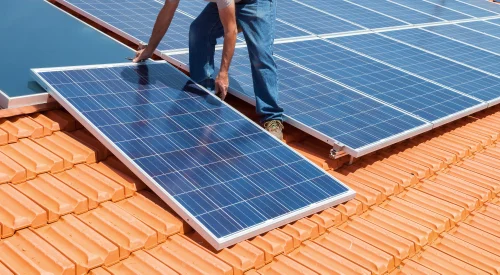Many homeowners choose a wrought iron fence for their properties for a variety of reasons. Fencing’s inherent resistance is one such factor. The owner is not worried about having to fix the 100-year fence anytime soon because of its strength and resilience to bending, strain, and denting.
Despite the system’s resiliency, accidents may still occur. Some rust and dents will eventually appear on your wrought iron fence. If this happens to you, you’ll want to be sure the fence repair can be completed quickly by the firm that originally erected it. You may be curious about the kind and potential extent of the damage that might be done. In the lines that follow, we’ll talk more about this, as well as the origins of the wrought iron fence.
Wrought Iron Origins
The earliest wrought iron railings were made possible by the 15th-century innovation of blast furnaces. Those rails were installed to provide a more secure stairwell or enclosed walkway. Church architecture and decoration also exhibit these early forms. Prior to the late nineteenth century, wrought iron was still commonly utilized even after steel had been developed. Approximately two centuries worth of time were devoted to using this technique. It wasn’t until the second half of the 18th century that new manufacturing methods allowed for the widespread use of cast iron railings.
The Adams brothers were instrumental in popularizing cast iron because they discovered how quickly and readily it could be shaped into classical forms. They found that classical shapes could be easily fashioned from metal. Until around 1850, cast iron was seldom utilized as an external ornamental element in homes. Balustrades, parapets, and railings for low stone boundary walls were most usually made of iron. It was also utilized as a finishing touch on the roofs, porches, and bay windows of certain middle-class residences. The popularity of cast iron increased throughout the Victorian period, and it was widely utilized to create Victorian gates, railings, panels, and the ornamental elements they housed.
During the Victorian period, it became the custom to build homes that were both aesthetically pleasing and striking in size and layout. Garden features such as gates, fences, and paths were often embellished with mosaic tile as part of this style. This was done to flaunt our plenty and success.
Cast iron is one kind, while wrought iron is another. Many British terraced residences, especially older ones, include Victorian-era gates and railings. The primary purpose of these gates and railings was to demarcate private property from public streets and to increase security.
Whether it is employed as ornamentation, fencing, railings, or terrace gates, traditional ironwork is often crafted to suit the architectural style of the property in which it is utilized. The manufacturers of the “gracious age” that gave rise to the Victorian style took their time to produce heirloom-quality, long-lasting works of art. Therefore, elaborate cast iron gates and railings were in great demand during this time. There were catalogs of mass-produced cast iron fences and gates available to the most opulent Victorian homes by the late 1800s.
Weather Damage
Your wrought iron fence might be damaged by the weather even if it was manufactured to endure all climates. The aesthetic value of your fence is most at risk from an all-too-common event. Corrosion of your fence may be caused by the buildup of any precipitation, including snow and ice. Strong winds are another weather-related risk that might compromise a fence’s integrity.
Despite your best efforts, there are certain things you just can’t stop from occurring. You may delay the rusting process by checking on your fence often, particularly after storms, and fixing any damage you notice.
Destruction Caused by Corrosion
Iron and other metal fences are particularly susceptible to corrosion. For homeowners who have only previously had vinyl or wood fencing at their properties, this is a typical point of annoyance. Immediate action is required for any corrosion-related problems.
If you take the time to examine your fence regularly for the first indications of rust, you may be able to prolong its useful life. If there are any flaws, they may be polished off with some sandpaper and a wire brush. A rust-resistant paint coat or two should be applied once the rust has been removed. To avoid breathing in harmful particles when sanding or painting, use a mask.
Contact the fence installer if you discover any major areas of rust on your fence, and ask if they can send someone out to replace it. If your fence has developed rust stains,
If problems persist, contact the installer to see if a repair crew can be sent.
Overweight and its Risks
Be very careful with anything you want to hang or lean on your fence. Due to its construction, the product should not be used to carry excessive weight. In the long run, the fencepost might flex or break under the strain of carrying so much weight. Even while no wrought iron fence is built to take the heavier weight for a longer length of time, this is particularly true with thinner wrought iron fence posts.
You should wait to make this choice until you know for sure that anything you want to put on your fence won’t add too much weight. Example: Christmas lights placed around fence posts may be preferable to large poinsettia wreaths. If you have concerns about whether or not a certain amount of weight is safe for your fence, you should consult with the professional who put it in.
Unintentional Damage
High visibility lights or reflector sticks buried close to your fence may help lessen the chance of a traffic accident if your property is located near a busy road or a bend in the road. Whether a car hits your fence and causes damage, contact your homeowner’s insurance provider to find out if you’ll be financially responsible.
Significant damage is likely to occur if anything heavy, such as a tree limb or a vehicle, crashes into your fence. Please notify the fence provider immediately if you see anything that might compromise the fence’s stability.
Conclusion
It is essential to monitor the condition of wrought iron fences and undertake periodic maintenance to handle any problems that may occur. After investing so much money in your fence, you want to keep it in pristine condition for as long as possible.
Make sure to ask the fence installation service what they suggest for routine upkeep. If you bought a house with an existing fence, you should contact a reliable firm like Butte Fence regarding maintenance.
Our wrought iron fence is available in a wide variety of styles. Please click here to get your needs evaluated if you are interested in making a purchase or have any inquiries.




